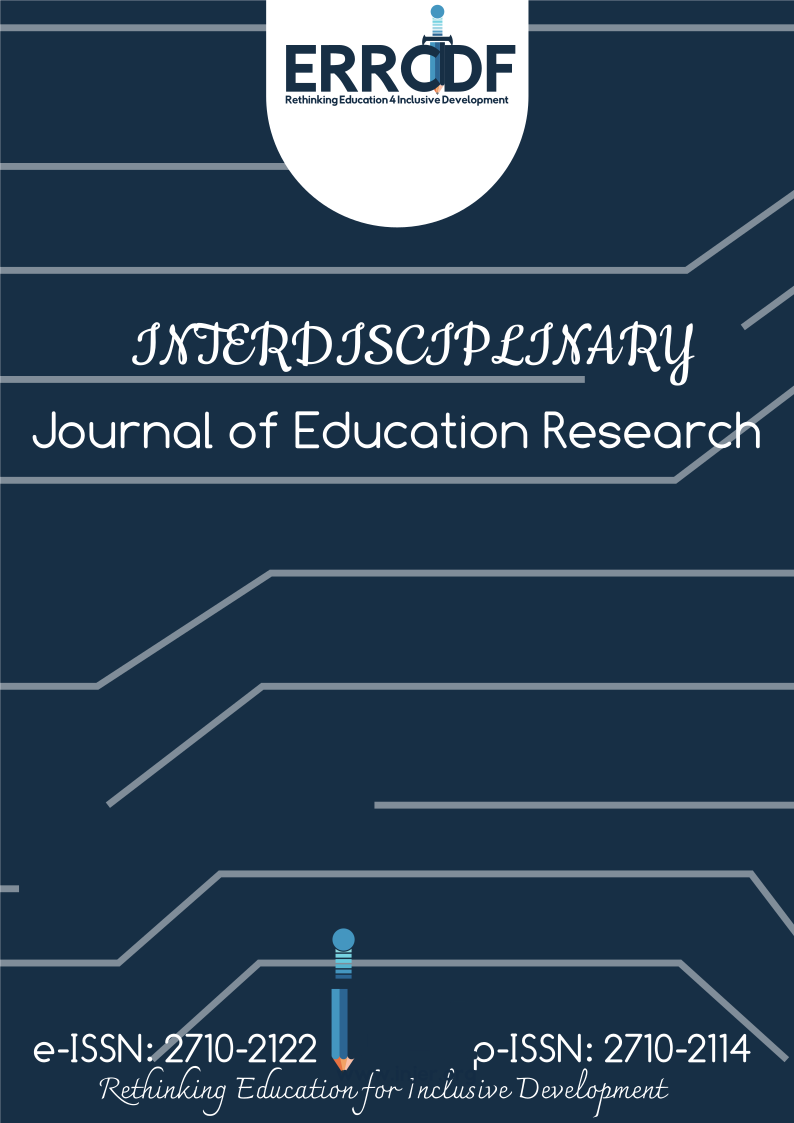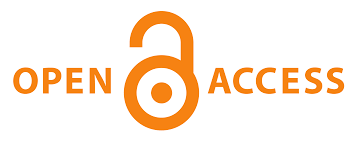Teachers’ experiences in using universal design for learning in primary mathematics classrooms: Professed benefits
DOI:
https://doi.org/10.38140/ijer-2025.vol7.s1.03Keywords:
Approach, primary mathematics, rural schools, universal design, LearningAbstract
The study explored the potential benefits of using the Universal Design for Learning (UDL) guidelines in primary mathematics classrooms. The multiple case study reported in this paper, grounded in social constructivism theory, focused on five under-resourced rural primary schools in the Free State Province, South Africa. A homogeneous purposive sampling method was used to select five mathematics teachers, one from each school. Data was generated through lesson observations, focus group discussions, and document analysis, with inductive content analysis employed to analyse the data. UDL guideline version 2.2 was used to interpret the data and provide explicit examples of UDL practices. The major pedagogical benefits of UDL, as indicated by the study's findings, included enhanced understanding and processing of content, offering learners multiple ways to access and engage with mathematical concepts, providing flexible teaching, and catering to a diverse learner population. Thus, the study's findings suggest that teachers should be strategic and intentional in using UDL to strengthen learning.
References
Adams, C. R., Barrio Minton, C. A., Hightower, J., & Blount, A. J. (2022). A systematic approach to multiple case study design in professional counselling and counsellor education. Journal of Counselor Preparation and Supervision, 15(2), 24.
Aguhayon, H., Tingson, R., & Pentang, J. (2023). Addressing students' learning gaps in mathematics through differentiated instruction. International Journal of Educational Management and Development Studies, 4(1), 69–87. https://doi.org/10.53378/352967
Agyei, E., Agbozo, K. K., & Yarhands, A. D. (2024). History of mathematical concepts and students’ cognitive understanding of mathematics: Effect of pedagogical content knowledge. Journal of Mathematics and Science Teacher, 4(3), em065. https://doi.org/10.29333/mathsciteacher/14585
Akpan, V. I., Igwe, U. A., Mpamah, I. B. I., & Okoro, C. O. (2020). Social constructivism: Implications teaching and learning. British Journal of Education, 8(8), 49–56.
Almeqdad, Q. I., Alodat, A. M., Alquraan, M. F., Mohaidat, M. A., & Al-Makhzoomy, A. K. (2023). The effectiveness of universal design for learning: A systematic review of the literature and meta?analysis. Cogent Education, 10(1), 2218191. https://doi.org/10.1080/2331186X.2023.2218191
Almumen, H. A. (2020). Universal design for learning (UDL) across cultures: The application of UDL in Kuwaiti inclusive classrooms. Sage Open, 10(4), 1-14. https://doi.org/10.1177/2158244020969674
Anderson, R. (2007). Being a mathematics learner: Four faces of identity. Mathematics Educator, 17(1), 7–14.
Baxter, P., & Jack, S. (2008). Qualitative case study methodology: Study design and implementation for novice researchers. The Qualitative Report, 13(4), 544–55.
Boothe, K. A., Lohmann, M. J., Donnell, K. A., & Hall, D. D. (2018). Applying the principles of universal design for learning (UDL) in the college classroom. Journal of Special Education Apprenticeship, 7(3), 1-13.
Bowen, G. A. (2009). Document analysis as a qualitative research method. Qualitative Research Journal, 9, 27–40. https://doi.org/10.3316/QRJ0902027
Braun, V., & Clarke, V. (2019). Reflecting on reflexive thematic analysis. Qualitative Research in Sport, Exercise and Health, 11(4), 589–597. https://doi.org/10.1080/2159676X.2019.1628806
Buchheister, K., Jackson, C., & Taylor, C. E. (2017). Maths games: A universal design approach to mathematical reasoning. Australian Primary Mathematics Classroom, 22(4), 7–12.
Burgstahler, S. (2009). Universal design of instruction (UDI): Definition, principles, guidelines, and examples. Do-It.
CAST. (2018). Universal design for learning guidelines version 2.2. http://udlguidelines.cast.org
Chen, P. H., Hong, J. C., Ye, J. H., & Ho, Y. J. (2022). The role of teachers’ constructivist beliefs in classroom observations: A social cognitive theory perspective. Frontiers in Psychology, 13, 904181. https://doi.org/10.3389/fpsyg.2022.904181
Corbin, J., & Strauss, A. (2008). Basics of qualitative research: Techniques and procedures for developing grounded theory (3rd ed.). Thousand Oaks, CA: Sage.
Da, N. T. (2023). Realistic mathematics education and authentic learning: A combination of teaching mathematics in high schools. Journal of Mathematics and Science Teacher, 3(1), em029. https://doi.org/10.29333/mathsciteacher/13061
Darling-Hammond, L., & Baratz-Snowden, J. (2007). A good teacher in every classroom: Preparing the highly qualified teachers our children deserve. Educational Horizons, 85(2), 111–132.
Dey, P. P. (2019, April). Engaging students with multiple representations of mathematical models. In2019 Pacific Southwest Section Meeting.
Distrik, I. W., Supardi, Z. A. I., & Jatmiko, B. (2021, February). The effects of multiple representations-based learning in improving concept understanding and problem-solving ability. In Journal of Physics: Conference Series (Vol. 1796, No. 1, p. 012044). IOP Publishing.
Fovet, F. (2020). Universal design for learning as a tool for inclusion in the higher education classroom: Tips for the next decade of implementation. Education Journal, 9(6), 163–172.
Gamage, K. A., Dehideniya, D. M. S. C. P. K., & Ekanayake, S. Y. (2021). The role of personal values in learning approaches and student achievements. Behavioral Sciences, 11(7), 102. https://doi.org/10.3390/bs11070102
Hamza, H., & Hernandez de Hahn, L. (2012). Practising constructivist and culturally responsive methods through differentiated instruction. International Journal of Humanities and Social Science, 2(5), 75-82.
Hayden, C. L., Carrico, C., Ginn, C. C., Felber, A., & Smith, S. (2021). Social constructivism in learning: Peer teaching & learning. Encompass.
Ismailov, M., & Chiu, T. K. (2022). Catering to inclusion and diversity with universal design for learning in asynchronous online education: A self-determination theory perspective. Frontiers in Psychology, 13, 819884. https://doi.org/10.3389/fpsyg.2022.819884
Iyamuremye, E., Ndayambaje, I., & Muwonge, C. M. (2021). Influence of teaching approaches on students’ performance in mathematics: A meta-analysis of quasi-experimental studies in Africa.African Journal of Educational Studies in Mathematics and Sciences, 17(2), 73-94.
Kim, S., Rodriguez, L., & Lee, D. (2020). Inclusive pedagogy in mathematics: A UDL approach. Educational Innovations, 10(3), 78–93.
Kozma, R. B. (2020). Use of multiple representations by experts and novices. InH. Kyngäs, K. Mikkonen, & M. Kääriäinen (Eds.), Handbook of learning from multiple representations and perspectives(pp. 33–47). Routledge.
Kyngäs, H. (2020). Qualitative research and content analysis. In H. Kyngäs, K. Mikkonen, & M.Kääriäinen (Eds.), The application of content analysis in nursing science research. Springer, Cham. https://doi.org/10.1007/978-3-030-30199-6_1
Lambert, R. (2020). Increasing access to universally designed mathematics classrooms. Policy Analysis for California Education, PACE.
Lee, M., & Garcia, P. (2020). Universal design for learning: Implications for primary mathematics classrooms. Mathematics Education Research, 22(1), 23–40.
Lohmann, M. J., Hovey, K. A., & Gauvreau, A. N. (2018). Using a universal design for learning framework to enhance engagement in the early childhood classroom. Journal of Special Education Apprenticeship, 7(2), n2.
Mabena, N., Mokgosi, P. N., & Ramapela, S. S. (2021). Factors contributing to poor learner performance in mathematics: A case of selected schools in Mpumalanga province, South Africa.Problems of Education in the 21st Century, 79(3), 451.
Mainali, B. (2021). Representation in teaching and learning mathematics. International Journal of Education in Mathematics, Science, and Technology (IJEMST), 9(1), 1–21.https://doi.org/10.46328/ijemst.1111
Marougkas, A., Troussas, C., Krouska, A., & Sgouropoulou, C. (2023). Virtual reality in education: A review of learning theories, approaches and methodologies for the last decade. Electronics, 12(13), 2832. https://doi.org/10.3390/electronics12132832
Meyer, A., Rose, D. H., & Gordon, D. (2014). Universal design for learning: Theory and practice. CAST Professional Publishing.
Mpalami, N., & Moleko, M. M. (2022). A critical exploration of student teachers’ choice and use of representations in a challenging environment. EURASIA Journal of Mathematics, Science and Technology Education, 18(11), em2181.
Mpiti, P. T., & Wambu, Z. Y. (2023). An investigation into the determinants of underperformance in mathematics among Grade 12 learners in a high school in the Eastern Cape. In D. Ortega-Sánchez (Ed.), Education annual volume 2023. IntechOpen.
Murawski, W. W., & Hughes, C. E. (2009). Response to intervention, collaboration, and co-teaching: A logical combination for successful systemic change. Preventing School Failure: Alternative Education for Children and Youth, 53(4), 267-277.
Navaitien?, J., & Stasi?naitien?, E. (2021). The goal of the universal design for learning: Development of all to expert learners. In Improving inclusive education through universal design for learning (pp. 23-57). Cham: Springer International Publishing.
Ndihokubwayo, K., Uwamahoro, J., & Ndayambaje, I. (2021). Classroom observation data collected to document the implementation of a physics competence-based curriculum in Rwanda. Data inBrief, 36, 107055. https://doi.org/10.1016/j.dib.2021.107055
Nieminen, J. H. (2022, February). Universal design for assessment in mathematics. In Twelfth Congress of the European Society for Research in Mathematics Education (CERME12) (No. 15).
Normoyle, C. (2023). A personal teaching philosophy and guiding principles. DRS Digital Library.
Nurrahmawati, N., Sa’dijah, C., Sudirman, S., & Muksar, M. (2020, March). Multiple representations ’ability in solving word problems. In Proceedings of the 2nd International Conference of Science and Technology for the Internet of Things, ICSTI 2019, September 3rd 2019, Yogyakarta, Indonesia. ICSTI.
Nyumba, T. O., Wilson, K., Derrick, C. J., & Mukherjee, N. (2018). The use of focus group discussion methodology: Insights from two decades of application in conservation. Methods in Ecology and Evolution, 9, 20–32. https://doi.org/10.1111/2041-210X.12860
Pluck, G., & Johnson, H. L. (2011). Stimulating curiosity to enhance learning. GESJ: Education Sciences and Psychology,2.
Priyadharsini, V., & Mary, R. S. (2024). Universal Design for Learning (UDL) in Inclusive Education: Accelerating Learning for All. Shanlax International Journal of Arts, Science and Humanities, 11(4), 145–150.
Rao, K., Ok, M. W., & Bryant, B. R. (2014). A review of research on universal design educational models. Remedial and Special Education, 35(3), 153–166.
Rapley, T. (2007). Making conversation, discourse, and document analysis. London: Sage.
Reynders, A. (2014). Obstacles that hamper learners from successfully translating mathematical word problems into number sentences (Doctoral dissertation, University of the Free State).
Root, J. R., Cox, S. K., Saunders, A., & Gilley, D. (2020). Applying the universal design for learning framework to mathematics instruction for learners with extensive support needs. Remedial and Special Education, 41(4), 194-206.
Saleem, A., Kausar, H., & Deeba, F. (2021). Social constructivism: A new paradigm in the teaching and learning environment. Perennial Journal of History, 2(2), 403-421.
Sewell, A., Kennett, A., & Pugh, V. (2022). Universal Design for Learning as a theory of inclusive practice for use by educational psychologists. Educational Psychology in Practice,38(4), 364–378.
Shah, R. K. (2019). Effective social constructivist approach to learning for the social studies classroom. Journal of Pedagogical Research, 3(2), 38–51.
Sharma, A., Thakur, K., Kapoor, D. S., & Singh, K. J. (2023). Designing inclusive learning environments: Universal Design for Learning in practice. In The Impact and Importance ofInstructional Design in the Educational Landscape (pp. 24–61). IGI Global.
Smith, A., & Johnson, B. (2020). Reimagining mathematics education through universal design for learning. Journal of Inclusive Education, 15(2), 45–62.
Taylor, N. (2021). The dream of Sisyphus: Mathematics education in South Africa. South African Journal of Childhood Education,11(1), 1–12.
Thomas, C. N., Van Garderen, D., Scheuermann, A., & Lee, E. J. (2015). Applying a universal design for learning framework to mediate the language demands of mathematics. Reading & Writing Quarterly,31(3), 207-234.
Thomas, G. (2011). A typology for the case study in social science following a review of definition, discourse, and structure. Qualitative Inquiry, 17(6), 511–521.https://doi.org/10.1177/1077800411409884
Uyen, B. P., Tong, D. H., Loc, N. P., & Thanh, L. N. P. (2021). The effectiveness of applying a realistic mathematics education approach in teaching statistics in Grade 7 to students' mathematical skills. Journal of Education and E-Learning Research, 8(2), 185-197.
Yadav, A., Phillips, M. M., Lundeberg, M. A., Koehler, M. J., Hilden, K., & Dirkin, K. H. (2011). If a picture is worth a thousand words, is video worth a million? Differences in affective and cognitive processing of video and text cases. Journal of Computing in Higher Education, 23, 15-37.
Downloads
Published
How to Cite
Issue
Section
License
Copyright (c) 2025 Matshidiso Mirriam Moleko, Mncedisi Christian Maphalala

This work is licensed under a Creative Commons Attribution 4.0 International License.










